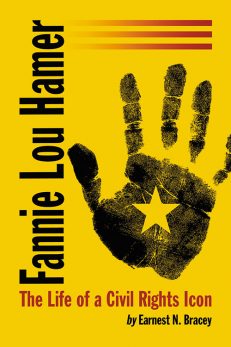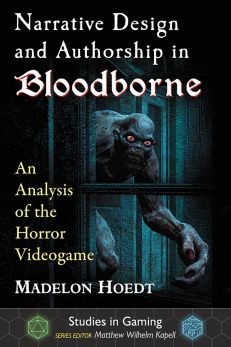Review Fix chats with author Madelon Hoedt, who discusses the creative process of her new book, Narrative Design and Authorship in Bloodborne.
Review Fix: How did this project start for you?
Madelon Hoedt: To be honest, I never imagined I would end up writing this. At the time that Bloodborne came out, I did consider myself a gamer, but I was put off by the reputation of Demon’s Souls and Dark Souls that preceded it. Too difficult for someone like me was my thinking, and as I wasn’t a huge fan of medieval fantasy, I had never given them a chance. However, a friend brought Bloodborne to my attention, and although I was still hesitant with regards to the difficulty, I ended up watching some of the trailers. What I found there was a game world that, in many ways, was made for me: dark, Gothic horror, a compelling cityscape, and gameplay and a narrative to match. I picked up my copy of the game that week, and began my slow, arduous journey through Yharnam’s streets.
It took me a good 100+ hours to reach the final boss on that first playthrough, and in the time it took me to complete, Bloodborne, in a weird way, took over my life. The game’s difficulty appeared to be a puzzle to solve, with a solution on how to tackle a certain boss or area never far away, making it very difficult to put down. In addition, as an academic who has been working in both the fields of horror studies and game studies for ten years, I saw something in Bloodborne that I had not encountered in a game before. I wanted to capture that in my research, and a book-length study seemed to be the best way to do so.
Review Fix: Any challenges during the writing process?
Hoedt: At its core, the book is a close reading of Bloodborne, examining the connections of the lore found within the game, and how they relate to wider discussions found within the Gothic and game studies. As a result, I wanted the book to be accessible to both existing fans who have played the game, and students and scholars from those academic fields.
In order to do so, I knew I needed to find a balance between what I will call “walkthrough segments” of in-game descriptions, before linking these to the more theoretical arguments. However, because the world and lore of Bloodborne are so tightly interwoven, this process of untangling the relevant information and presenting it in the right way to the reader became the biggest challenge. How can you break down a game that relies so heavily on the connections between its parts?
Review Fix: Why do videogames matter?
Hoedt: This may sound a bit glib, but I would counter this with: why don’t they matter? Over the past decades, videogames have become ubiquitous, as an industry that continues to grow and as a pastime that is as ordinary as watching television or reading. On a more personal level, I feel that videogames allow for a multitude of narratives to be told, and for them to be told in new and interesting ways. I have also been very excited by the growth of independent studios and the games that they produce. Although the onus is still with the big developers and the triple A titles, there has been increasing support and praise for indie titles. It also opens up ways for new, underrepresented stories to be told.
Review Fix: How do you think Bloodborne and similar games have changed pop culture?
Hoedt: At the time that Dark Souls came out, it was in a landscape where videogames were seen as increasingly holding the hands of the players through excessive tutorials and on-screen instructions. Suddenly, a game landed that simply placed players within a world they had no understanding of, and left them to their own devices. That choice alone resulted in a big shake-up, cemented by FromSoftware’s following titles. Alongside this sits the appearance of a wealth of games inspired by Miyazaki’s work, collectively known as Souls-like, which shows the lasting appeal of this style of gaming.
That being said, I do feel that not all of these developments are for good, and that a narrative seems to have sprung up around who should or shouldn’t play these games. The “git gud” mantra that started at the time of Dark Souls has endured, and is not always a productive way to deal with discussions of difficulty and, by extension, accessibility. On the flip side of that, it has also opened up new ways of talking about these issues, as can be seen in the articles surrounding the recent release of FromSoftware’s latest title Sekiro: Shadows Die Twice. Gamers and journalists alike have started to raise questions about the unflinching difficulty that From’s titles are known for and, by extension, are opening up new discussions about making videogames more accessible to a wider range of players who may be struggling with a variety of conditions that prevent them from engaging in their hobby.
Review Fix: What’s your background like? How has Bloodborne affected your life?
Hoedt: I think both Bloodborne, and getting into this style of games, has been an exercise in resilience. I came to gaming quite late, not until my early twenties, and had a console-free childhood. Again, this was one of the reasons that initially put me off trying the game: Soulsborne was not for gamers like me. Yet having played Bloodborne, and other Souls and Souls-like titles since, I have to say that the playstyle they invite has made me a more skilled gamer. I also find myself turning to Soulsborne for a confidence boost, if you will: the games may be challenging, but these can always be overcome. I have found it very difficult to simply give up on Bloodborne, in particular; there would always be something else I could do or try. For me, that feeling of these in-game victories, whether defeating a boss, clearing an area or finding a new shortcut, can actually act as a bit of a lift to help tackle other aspects of work and life. On a more mundane note, however, Soulsborne has seriously eroded my patience with other RPGs, in particular with regards to heavy narrative and endless fetch quests…
Review Fix: What did you learn about yourself through writing this?
Hoedt: In a way, the book has helped me cement my chosen career path as an academic and researcher. After my PhD, this is the first piece of long-form writing I have done (counting over 80,000 words), and within a space of time that was much shorter than my doctorate. During the PhD process, I still felt like a student, learning how to take on a project on that size, with guidance and support available. The Bloodborne book has been my step to go it alone, as it were, and seeing the manuscript from inception to proofs has been very satisfying, if only from the perspective of being able to complete it.
Review Fix: What are your goals for the book?
Hoedt: My primary aim is for it to sit alongside the increasing number of titles (on games like Doom, Myst and Silent Hill) that analyse specific games. There has been a growth of academic works on games more generally, but at the same time, videogames are hardly a big, homogenous mass of similar experiences. For this reason, I think there is a clear place for books that closely examine a single title or franchise. More specifically to this title is the fact that there has been no full-length study on any of Miyazaki’s work at this point, despite its popularity and influence.
Review Fix: What’s next?
Hoedt: I have been researching horror in a variety of forms over the past ten years, with a specific focus on immersive and interactive experiences in both games and performance. That work is set to continue, with a number of articles and book chapters out, or about to be released. The biggest project at the moment is a second book, which looks at horror and popular performance.





